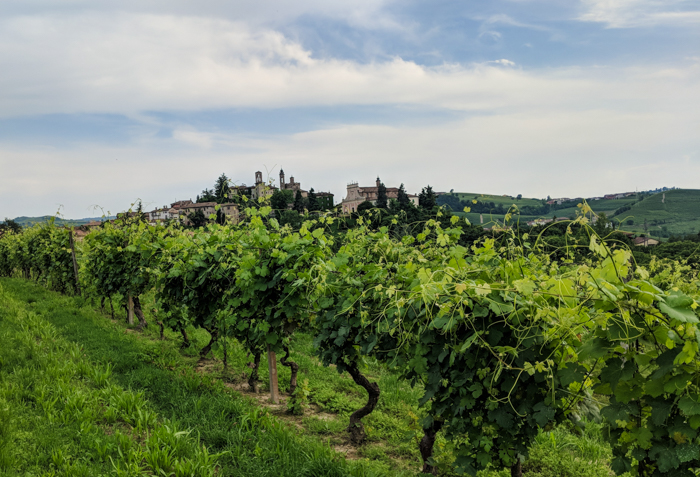 As I spend a delightful spring afternoon strolling through the picturesque quiet streets of Neive, admiring 13th century villas and charming churches, watching local families enjoy tasty-looking outdoor lunches at quaint trattorie, I keep an eye out in the distance for the lovely vistas of valleys and vineyards that reveal themselves between the ancient edifices. This is one of my favorite little towns in Italy, and the start point of our Italiaoutdoors Piedmont walking tour. But it took a visit with Matteo at Castello di Neive, one of the leading producers of Barbaresco, to reveal the history that, unbeknownst to me, lay beneath my wandering feet.
As I spend a delightful spring afternoon strolling through the picturesque quiet streets of Neive, admiring 13th century villas and charming churches, watching local families enjoy tasty-looking outdoor lunches at quaint trattorie, I keep an eye out in the distance for the lovely vistas of valleys and vineyards that reveal themselves between the ancient edifices. This is one of my favorite little towns in Italy, and the start point of our Italiaoutdoors Piedmont walking tour. But it took a visit with Matteo at Castello di Neive, one of the leading producers of Barbaresco, to reveal the history that, unbeknownst to me, lay beneath my wandering feet.
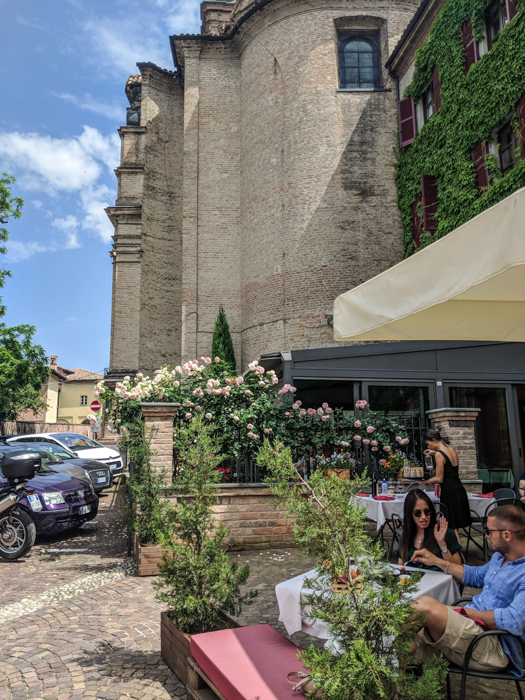
The winery is today located in the eponymous Castello di Neive on the towns south-western border. Neive is one of the three villages in the Barbaresco wine zone. This picturesque walled town dates back to the 12th century. A castle was first built on this spot during the foundation of Neive, but was destroyed in 1274. Other castles followed, built on the old foundations, until the beginning of the 18th century when Manfredo Bongioanni, the Count of Castelborgo, built the castle I visit today. A defensive wall with sentry boxes links the castle and its gardens to the southern gate of the town, just steps away from the lovely town center where diners are savoring their glass of Barbaresco. The castle was completed in 1753, when the beautiful internal chapel was officially unveiled.
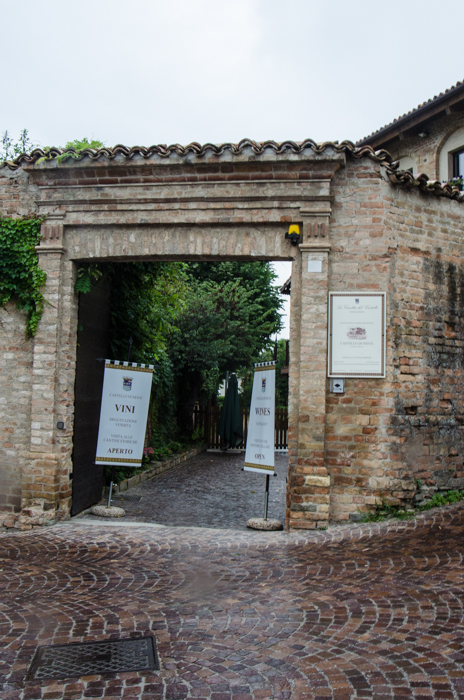
Today the castle cellars are still used for wine production, thanks to the original innovative design which has accommodated, and even facilitated modern vinification techniques and equipment. The cellars were constructed with very high ceilings to allow the use of big barrels. In these very cellars, during the 19th century, the French oenologist and wine trader Oudart, a name renowned as one of the key players in the creation of Barolo, was operating as a consultant to the Count of Castelborgo. He is credited by many (but not all) as the first in the area to obtain a dry, stable and therefore easily exportable wine from Nebbiolo grapes, first in the nearby town of Barolo. When used here, he called the wine ‘Neive’ and in 1857 this wine won a gold medal in London. The first ‘Barbaresco’ was produced thirty years later, using the same techniques employed by Oudart.
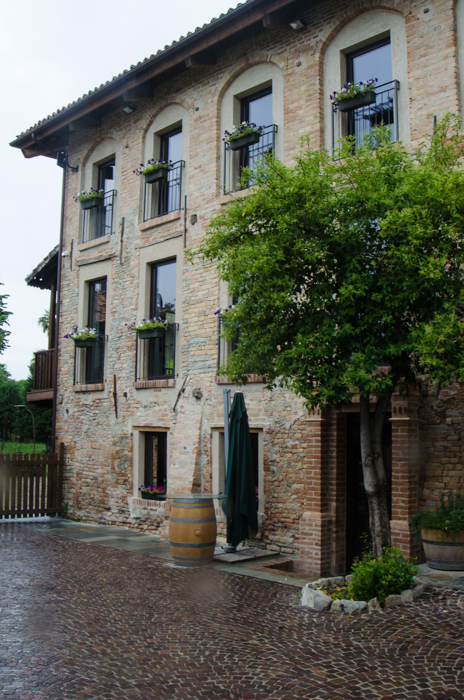
My guide Matteo took me through the cellars and shared the history of the current winery. This 150 acre estate is owned by the Stupino siblings – Anna, Giulio, Italo and Piera. They were all born in Neive, the forth generation of a local family. In the 1960s, their father, Giacomo, began to purchase vineyards and land in the most favorable locations for viticulture, Messoirano, Montebertotto, Basarin, Valtorta, I Cortini. They began first producing wine for their own consumption, and selling their remaining grapes. In 1964 they purchased the castle with its spacious cellars, and more land in the prime areas of Santo Stefano and Marcorino. They began a renovation of the cellars and reorganized the vineyards, and in the 70s began to produce their own wines and sell them.
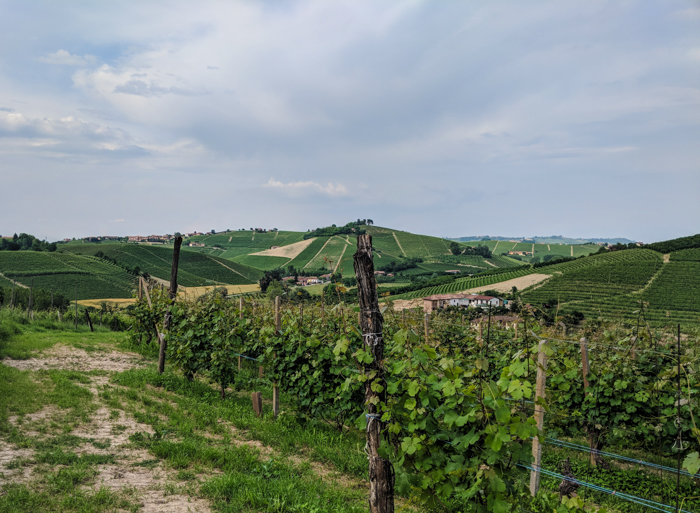
Today they cultivate a wide variety of grapes – Nebbiolo, Dolcetto, Barbera, Grignolino, Pinot Nero (which is used in their sparkling wines) and a lone white, Arneis. The last has an interesting story – Matteo told me that the impetus for the use of Arneis came from Italo’s wife, who only drinks white wines. The result was a collaboration between Italo and some experts from the University of Turin, as they sought a local white grape to add to their portfolio. Together with the University, Castello di Neive put into place a clonal selection program with Arneis, a white grape long ignored due to its low yield, and a general lack of local knowledge in white wine vinification methods. They took 30 – 35 different Arneis clones and planted them in different vineyards throughout Langhe and Roero. After evaluating the results, they selected the best 3-4 to reintroduce to the area and produce white wine.
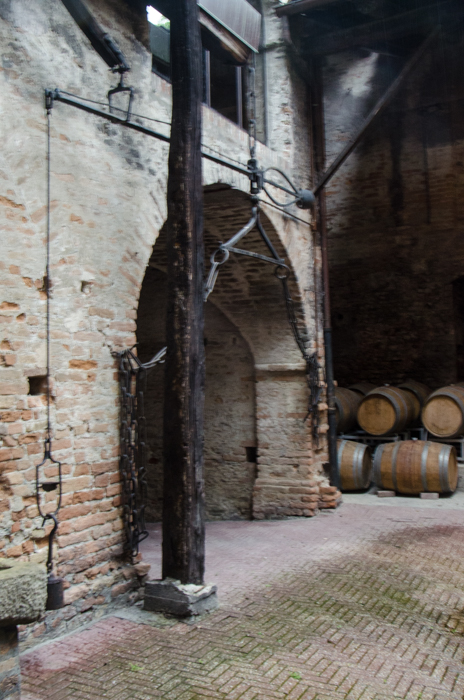
We started in the castle courtyard, where Matteo pointed out the large rare steelyard and wine press. The steelyard was used to weigh the grapes and wine carts as they came and went, as the farmers who supplied the grapes were paid by weight. We move inside, and on this level the cellar stands about 4.5 meters high, very high ceilings for 1700s construction. Here, in this temperature controlled environment, are racks of barriques and larger oak barrels for aging.
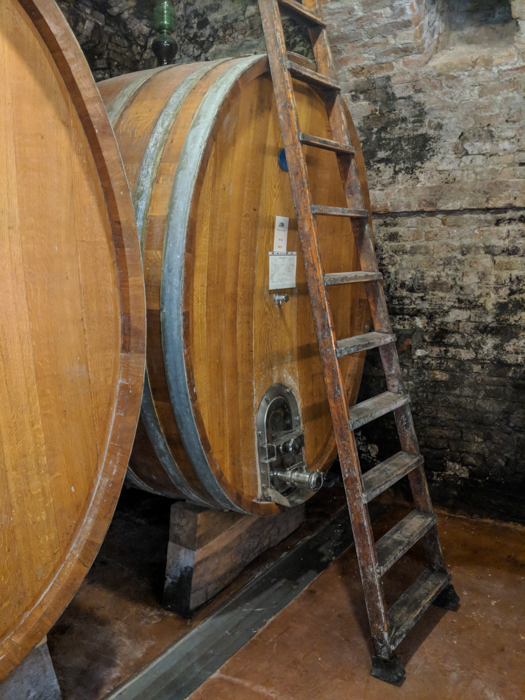
An adjacent cellar has a slightly lower vaulted ceiling (3.5 – 4 meters high), found here are 35-hectolitre Allier oak barrels used for ageing. Leading off of this cellar, almost requiring us to now lower our heads to enter an ‘infernotto’, a term new to me that refers to the deepest part of the cellars. I’ve lost my bearings, but Matteo orients me and I learn that this infernotto was built into the hill and passes under the adjacent houses of Neive, where I had been wandering earlier that day. This infernotto was uncovered in 1996, and had likely been used as a stable for small animals like sheep and goats. The room had been closed off with a wall approximately 300 years ago, to prevent unpleasant odors from entering the cellar. It is not deemed suitable for any winery use today, but it does provide visitors a nice view of the many layers of marl that make up the terroir of Barbaresco.
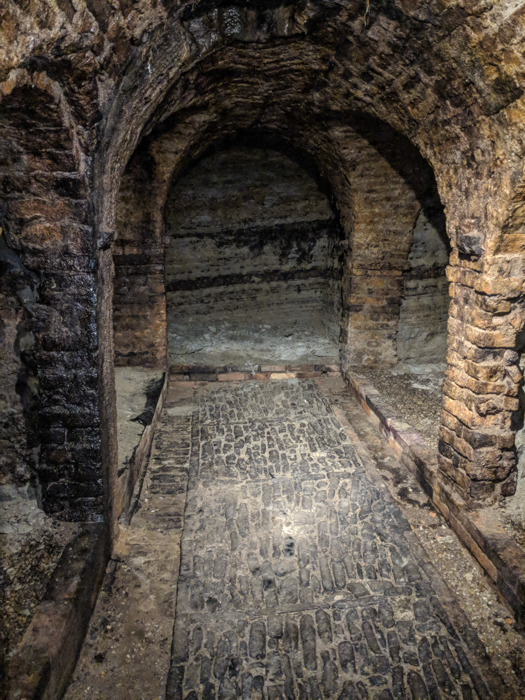
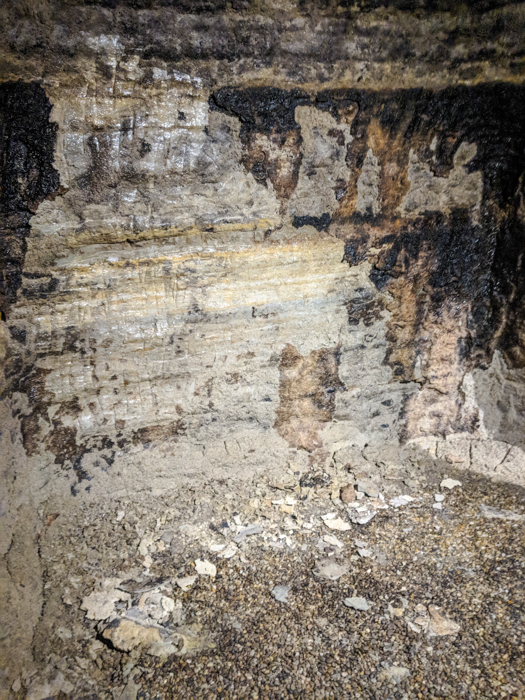
We pass through more cellars, these currently empty but destined to become event space for the winery. We arrive at yet another infernotto, more finished and less damp than the first. This was the old larder, where in winter snow was gathered to preserve fresh and cured meats, eggs, cheese, and bottles of Nebbiolo wine. This corridor, which runs from the castle’s cellars well into the depths of the hill, inspired the family to produce a Metodo Classico wine. Here, temperatures remain between 45 – 55 F no matter the season, the ideal temperature for the production of sparkling wines. These are Pinot Nero based sparkling wines, and production began with the harvest of 1995. A traditional wooden riddling rack held a few bottles for demonstration purposes.
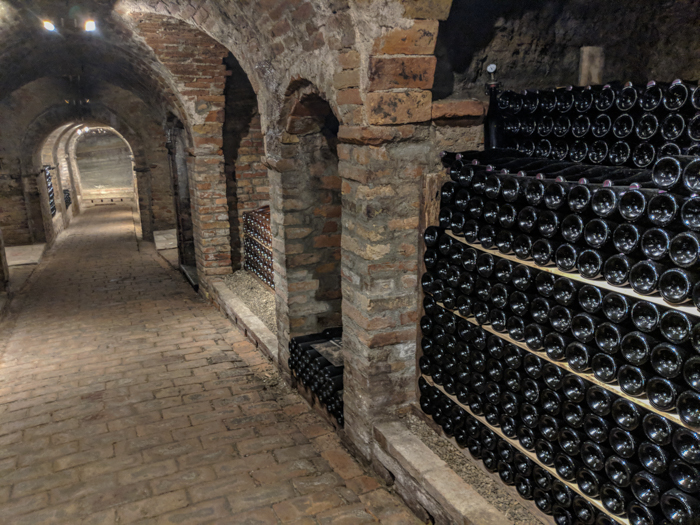
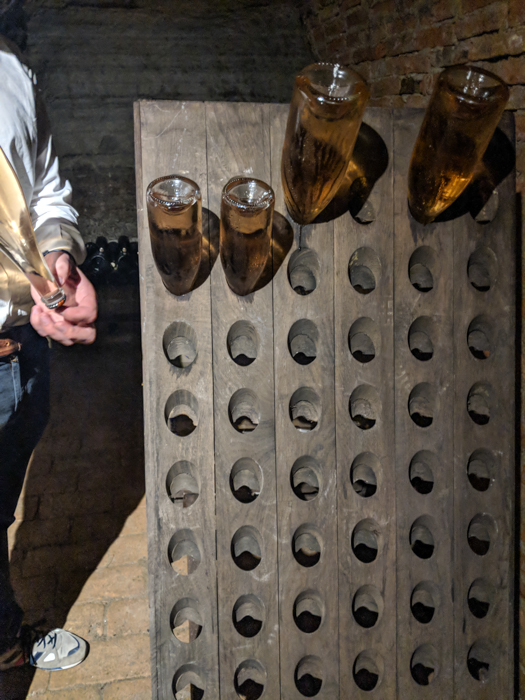
As we exit the infernotto, I spot a small assortment of wine bottles well-covered with sediment. These are older vintages of their Arneis wines. Matteo informs me that the staff opens one every once in a while, and find them still drinkable well past the expected expiration date. I’ll recall this secret treasure trove next time I’m above in Neive enjoying a glass of crisp Arneis at an enoteca! On that note, it is off to the tasting room where Matteo set me up with an enlightening tasting of their wonderful wines.
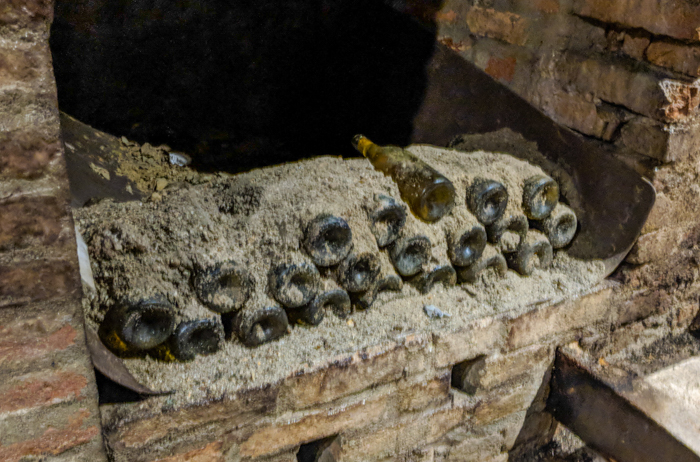
Langhe Arneis Montebertotto 2016
The Montebertotto vineyard and its neighbor Messoirano cover an entire hill, and enjoy an extremely favorable exposure and microclimate. It is in this vineyard that, in 1978, the collaboration with the University of Turin on the clonal selection of the Arneis grape began.
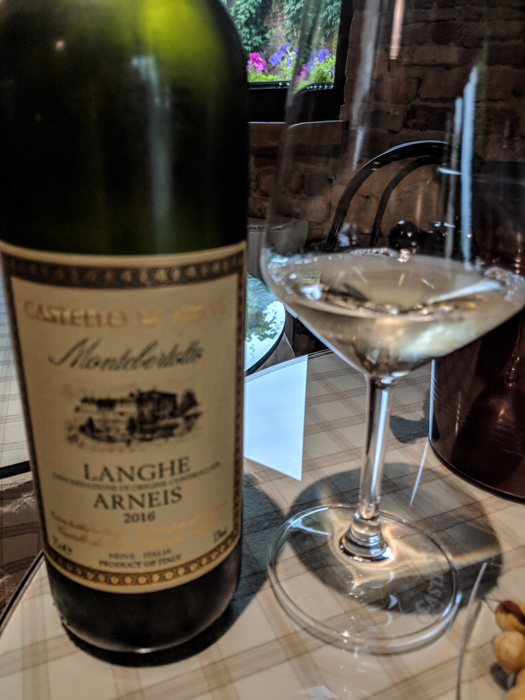
Straw yellow, with green notes. Arneis is a medium-bodied wine, fresh and floral with stone fruits, pear, grassy. Crisp acidity with bitter almond notes on the finish. Enjoy with antipasti and light pasta dishes.
Vigna Basarin Dolcetto d’Alba 2015
Dolcetto, the “little sweet one” is neither little nor sweet. Wines made with Dolcetto are quite dark in color with flavors of blackberry, licorice, and tar. The wines typically don’t age well due to their low acidity, but offer plenty of tannin. This is one of the everyday drinking wines of the Piedmontese.
Basarin is one of the 8 vineyards owned by Castello di Neive, the very first one they purchased. The current owner recalls childhood picnics to this hill, where, armed with baskets full of food and bottles, they met aunts and relatives, all dressed up, and feasted on Dolcetto grapes and bruschette. Today they own the top half of the Basarin hill. The reputation of the Dolcettos obtained from grapes grown on this hill has always been high. Father Giacomo, who knew the nature of its soil and how windy the hill can get, always insisted they should never plant any Nebbiolo there. So even though it is officially now part of Barbaresco, they still planted Dolcetto here.
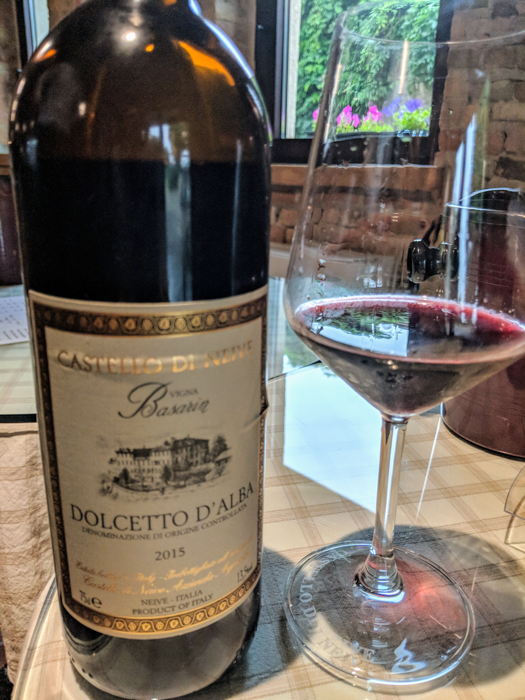
Ruby red with violet reflection. Intense fruit aroma with notes of jam, eucalyptus and herbs. Well balanced, nicely structured, with notes of ripe fruit, elegant finish.
Vigna Santo Stefano Barbera d’Alba 2016
Barbera is the most planted red grape variety in Piedmont as it is a bit less exacting than Nebbiolo. Barbera wines from Piedmont are dark in color and taste of black cherry, licorice, and dried herbs.
In 1964, during the negotiations to acquire the Castle and its vineyards, Giacomo had to choose between a piece of land where a vineyard had already been planted, and the Santo Stefano farm, where the land was mostly fallow. Giacomo recognized the great potential of Santo Stefano, and chose to acquire that wild hill, transforming Santo Stefano into the high quality vineyard it is today.
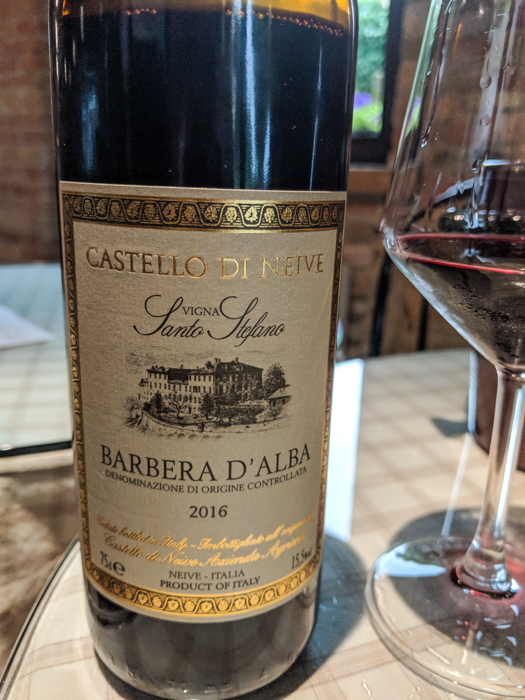
Intense ruby red with purple tinges. Ripe cherries with hints of spices, nice complexity, well-structured, balanced acidity. Persistent finish.
Gallina Barbaresco 2014
The Gallina vineyard is planted with Nebbiolo for Barbaresco, with Pinot Grigio, Riesling italico and Pinot Bianco for a Castelborgo Brut made using the Charmat method (used for Prosecco) and with Pinot Nero for Metodo Classico.
Bright garnet red in color. Delicate floral perfume with cherry notes. Full and aromatic flavors of cherry, licorice tar, with fine and elegant tannins.
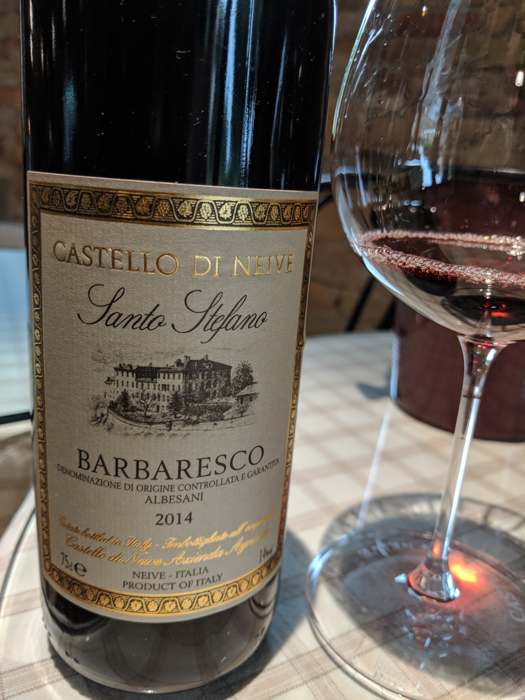
Santo Stefano Barbaresco 2014
The aforementioned Santo Stefano hill first planted by Giacomo is now regarded as one of the premier crus for Barbaresco.
Bright garnet red in color. Elegant, with aromas of eucalyptus and floral notes typical of this particular vineyard. Beautifully structured with balanced tannins with refreshing acidity and persistent finish.
